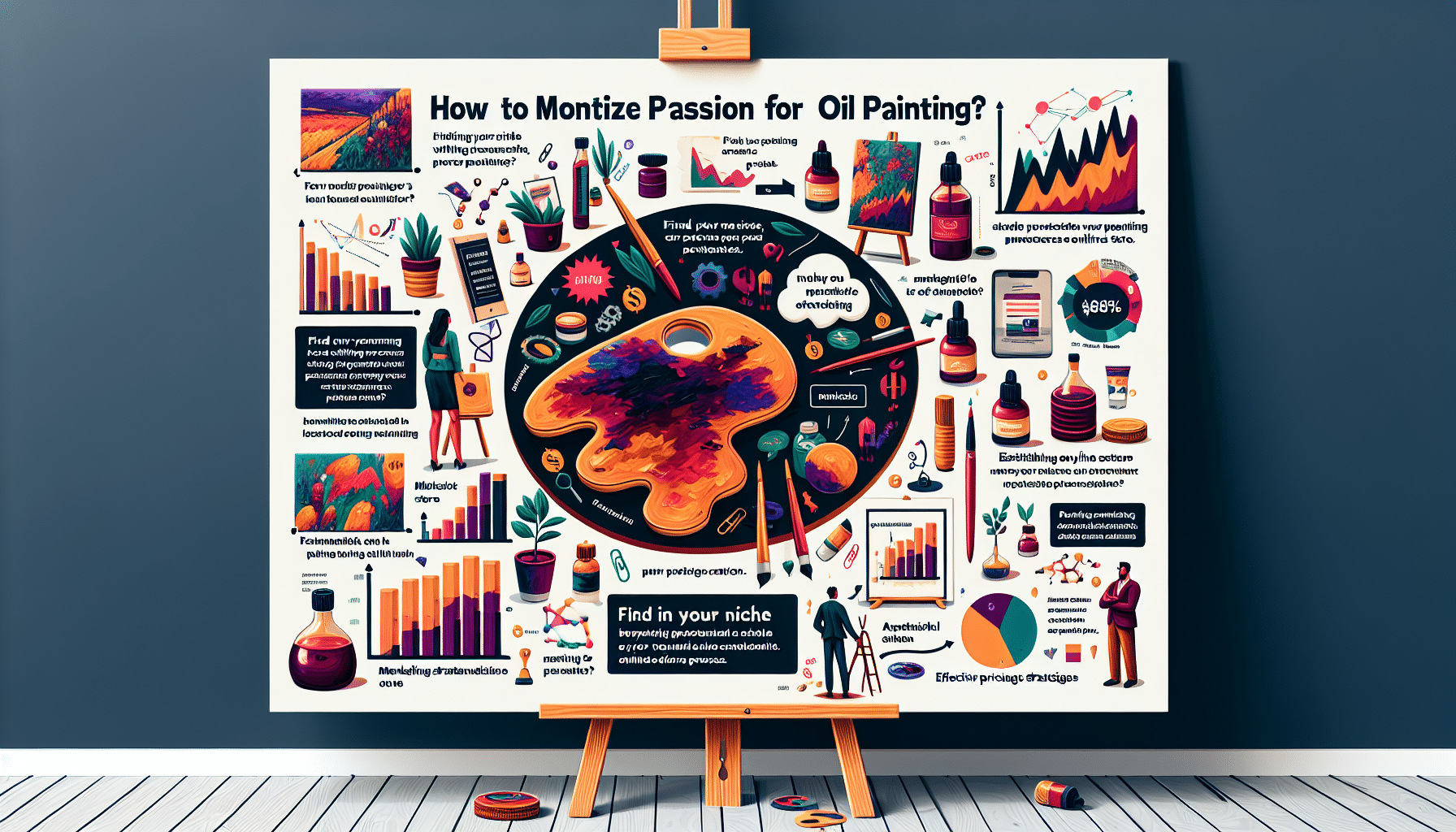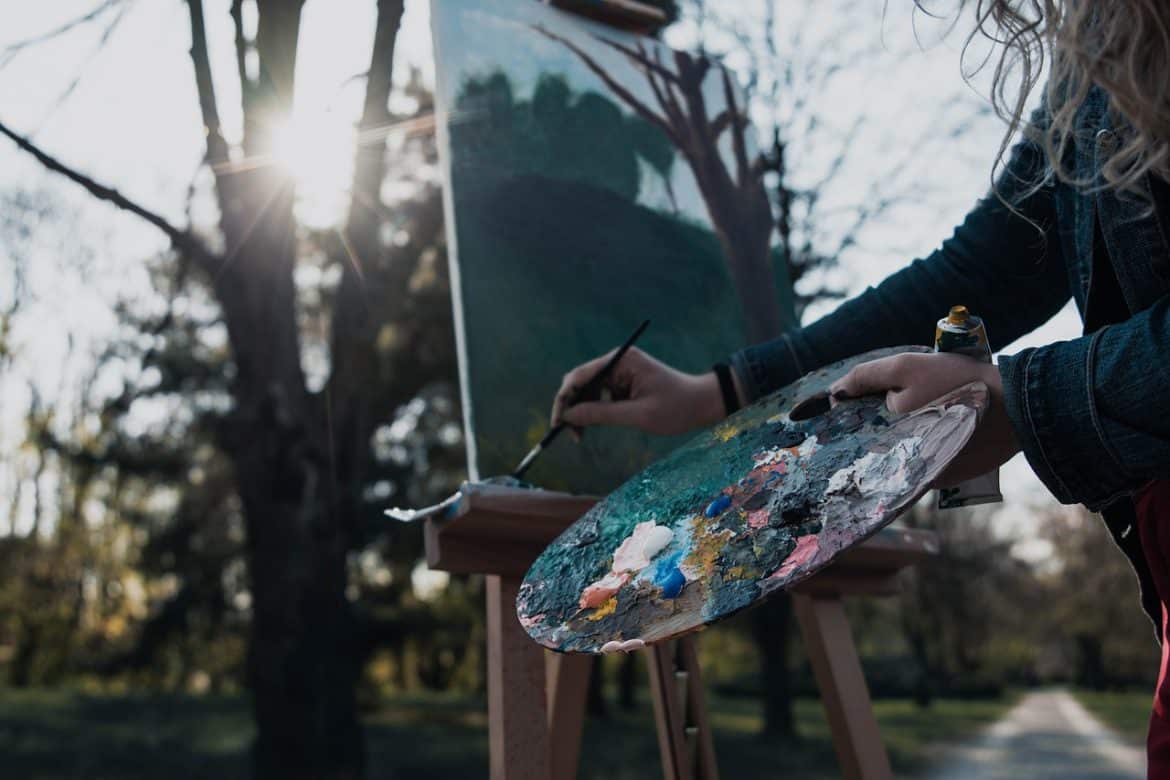If you have a talent for art and a passion for oil paintings, then you're in luck! In this article, we will explore the various ways you can turn your artistic skills into a lucrative source of income. Whether you're a professional artist or just starting out, we'll provide you with tips, tricks, and strategies to help you make money doing what you love - drawing oil paintings. So grab your paintbrushes and get ready to unleash your creativity, because the possibilities are endless when it comes to earning money through your artwork.
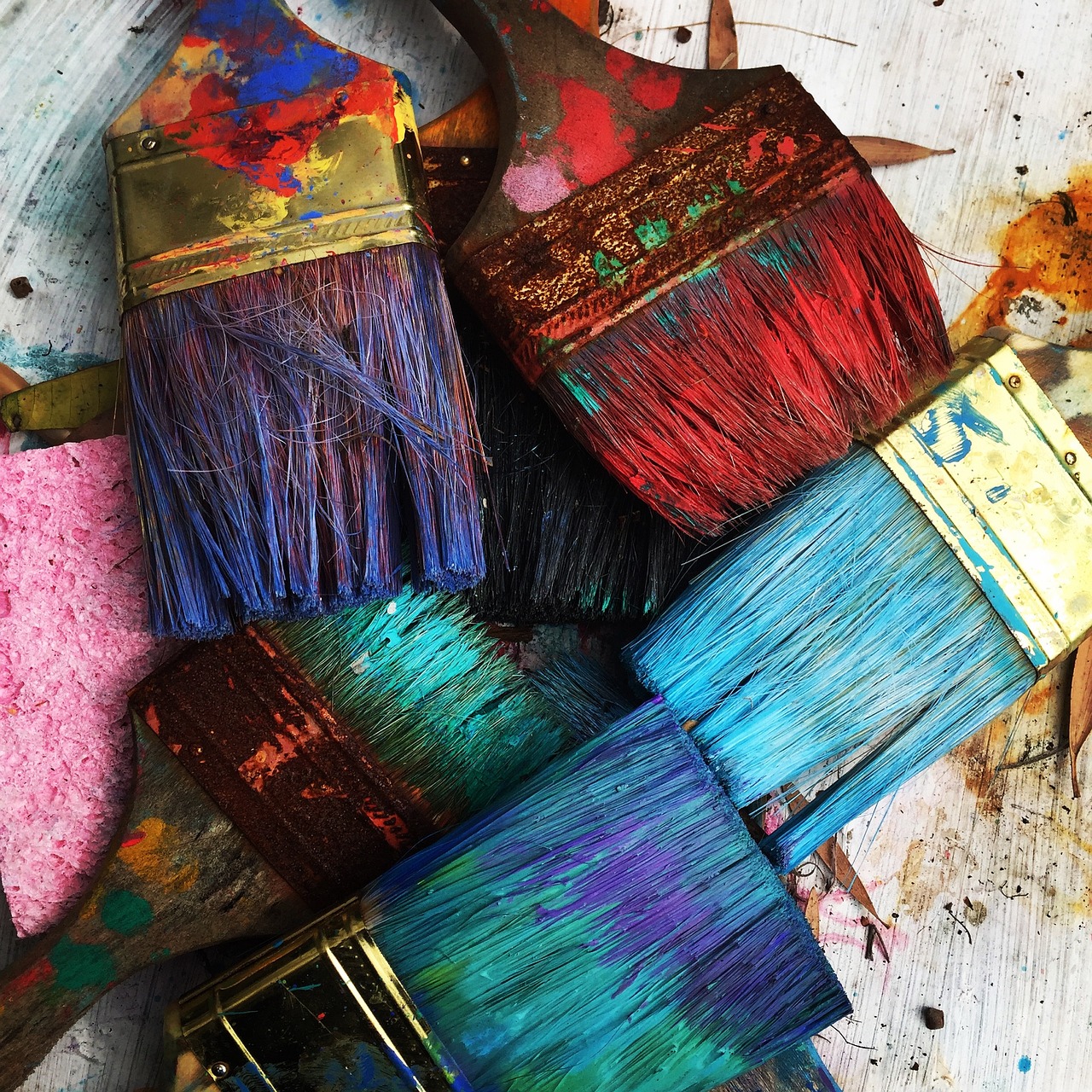
This image is property of pixabay.com.
Choosing a Niche for Oil Paintings
Identifying your passion
When choosing a niche for your oil paintings, it's important to start by identifying your passion. What subjects, themes, or styles bring you the most joy and excitement? By focusing on what you love, you'll not only enjoy the process of creating your art, but you'll also be able to convey that passion to potential buyers.
Take the time to explore different genres and subjects within oil painting to see what resonates with you the most. It could be landscapes, portraits, still life, or even abstract art. Remember, finding your passion is the first step towards creating art that truly speaks to your audience.
Researching market demand
While it's crucial to follow your passion, it's equally important to research the market demand for different types of oil paintings. Understanding what styles or subjects are popular among art collectors can help you tailor your art to meet their preferences and increase your chances of selling.
Look for trends in the art market and study which types of oil paintings are in high demand. It's also a good idea to visit galleries or online art marketplaces to see what types of paintings are selling well. This research will give you valuable insights into what potential buyers are looking for and allow you to make informed decisions about your niche.
Finding a unique angle
In a competitive art market, finding a unique angle can help you stand out among other artists. While it's essential to understand market demand, it's equally vital to bring your own unique interpretation and style to your oil paintings.
Consider what sets your artwork apart from others. It could be a distinctive technique, a particular subject matter, or a personal story behind each painting. By finding your unique angle, you'll be able to differentiate yourself in a saturated market and attract collectors who appreciate your individuality.
Developing Your Skills as an Artist
Investing in art education
To become a skilled oil painter, investing in art education is crucial. Enrolling in art classes or workshops can provide you with the necessary knowledge and techniques to improve your skills.
Look for reputable art schools, community colleges, or even online courses that offer oil painting classes. These educational opportunities will not only teach you the foundational principles of oil painting, but they will also expose you to different styles and approaches that can further enhance your artistic abilities.
Practicing regularly
Becoming a proficient oil painter requires practice and dedication. Set aside regular time in your schedule to paint and experiment with different techniques. The more you practice, the more comfortable and confident you will become in your abilities.
Consider creating a dedicated art space in your home where you can work without distractions. Surround yourself with inspiration, whether it's art books, photographs, or objects related to your chosen subject matter. Embrace the joy of the creative process and allow yourself to make mistakes and learn from them.
Experimenting with different techniques
As an artist, it's essential to continuously push the boundaries of your skills and experiment with different techniques. Try incorporating new brushwork, textures, or color palettes into your oil paintings. Not only will this help you grow as an artist, but it will also allow you to offer a diverse range of artwork to potential buyers.
Attend workshops or seek out online tutorials to learn about different techniques used by professional oil painters. Experimentation will not only keep your art fresh and exciting but also allow you to find your own unique style that sets you apart from others.
Building Your Portfolio
Creating a cohesive body of work
Building a strong portfolio is essential for showcasing your skills and attracting potential buyers. Your portfolio should consist of a cohesive body of work that represents your chosen niche and demonstrates your artistic growth.
Choose a consistent style, color palette, or theme that runs through your paintings. This will help create a sense of unity and professionalism in your portfolio. Select your best pieces that showcase your technical skills, creativity, and distinctive style.
Including diverse subject matters
While having a cohesive body of work is important, it's also beneficial to include diverse subject matters in your portfolio. This shows your versatility as an artist and can attract a wider range of buyers.
Consider including oil paintings of different genres or themes, such as landscapes, portraits, still life, or abstract art. This diversity will demonstrate your ability to tackle various subjects and appeal to collectors with different preferences.
Showcasing your best pieces
Make sure to showcase your best pieces prominently in your portfolio. These should be the paintings that you feel most proud of and that represent your unique style and level of skill.
Invest in professional photography or scanning services to capture high-quality images of your artwork. These images will be crucial for promoting your oil paintings online and in print materials. Remember, first impressions matter, so make sure your portfolio showcases your art in the best possible light.
Establishing an Online Presence
Creating a professional website
In today's digital age, having a professional website is essential for establishing your online presence as an artist. Your website will serve as a virtual gallery where potential buyers can view and purchase your oil paintings.
Invest in a user-friendly website builder or hire a professional web designer to create a visually appealing and functional website. Ensure that your website showcases high-quality images of your artwork, includes an easy-to-navigate interface, and provides information about your artistic journey and contact details.
Optimizing for search engines
To enhance your online visibility and reach a wider audience, optimize your website for search engines. This involves incorporating relevant keywords into your website's content, metadata, and image descriptions.
Research popular search terms related to oil paintings and your chosen niche to attract organic traffic to your website. Regularly update your website with new content, such as blog posts or artist statements, to improve its search engine ranking. Remember to always focus on providing valuable information and engaging content for your visitors.
Utilizing social media platforms
Social media platforms can be powerful tools for promoting your oil paintings, connecting with art enthusiasts, and attracting potential buyers. Create accounts on popular platforms such as Instagram, Facebook, and Pinterest, and regularly post high-quality images of your artwork.
Engage with your followers by responding to comments, sharing behind-the-scenes glimpses of your artistic process, and participating in relevant art-related discussions. Social media can not only help you increase your online presence but also provide opportunities for collaboration and networking with other artists and art organizations.
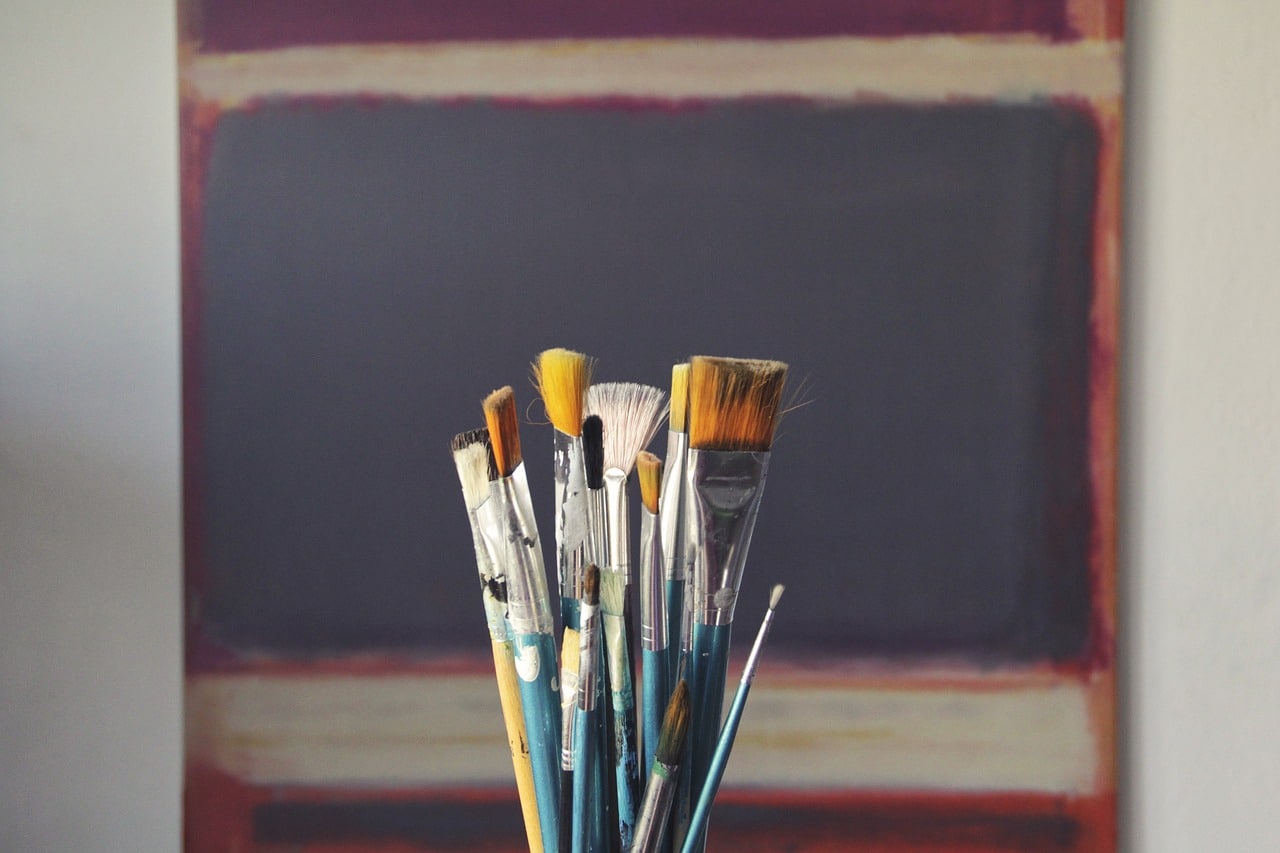
This image is property of pixabay.com.
Networking and Collaborations
Attending art events and exhibitions
Networking is an essential aspect of establishing yourself as an artist. Attend art events, exhibitions, and gallery openings to connect with fellow artists, gallery owners, and potential buyers.
Introduce yourself confidently, share your artistic journey, and be genuinely interested in others' work. Building relationships with fellow artists can lead to collaborations, exhibition opportunities, or even mentorship. Art events are also a great way to stay updated on current trends in the art world and find inspiration for your own work.
Joining art organizations or societies
Joining art organizations or societies can provide valuable networking opportunities and support from fellow artists. Look for local or national organizations that align with your artistic goals and interests.
Being a part of an art organization allows you to attend member-exclusive events, workshops, and exhibitions. It also provides a sense of community and can help you stay motivated and connected within the art world. Collaborative projects and group exhibitions organized by these organizations can further expand your exposure as an artist.
Collaborating with other artists or businesses
Collaborations with other artists or businesses can be mutually beneficial and help you expand your reach in the art market. Consider partnering with a fellow artist to create a joint exhibition or collaborate on a series of paintings.
You can also collaborate with businesses by offering custom-designed oil paintings or participating in art-related projects. For example, restaurants or hotels often seek artwork to enhance their ambiance, and collaborating with them can lead to exposure and potential sales. Be open to exploring collaborative opportunities that align with your artistic vision and allow you to reach a wider audience.
Selling Your Oil Paintings
Setting competitive pricing
Pricing your oil paintings properly is essential for attracting buyers and ensuring a fair return on your investment of time and materials. Research the market value of similar paintings by artists within your niche to get a sense of the appropriate pricing range.
Consider factors such as the size of the painting, your level of experience, and the demand for your work when determining your prices. It's important to strike a balance between affordability for potential buyers and fair compensation for your artistic skills and efforts.
Exploring different sales channels
Diversifying your sales channels can maximize your exposure and increase your chances of making sales. Besides selling through galleries, consider online platforms such as art marketplaces or your own website's e-commerce section.
Research different sales channels that cater to your target audience and allow you to reach buyers who appreciate your chosen niche. By expanding your reach across multiple platforms, you can increase your visibility and appeal to a broader range of collectors.
Offering limited edition prints
Limited edition prints can be a valuable addition to your sales strategy. By offering high-quality reproductions of your original oil paintings, you can make your art more accessible to a wider audience.
Work with a professional printmaker to create limited edition prints that closely resemble the texture and colors of your original paintings. Number and sign each print to create a sense of exclusivity and scarcity. Limited edition prints can be sold at a lower price point than original paintings, making them an attractive option for collectors who appreciate your art but have a limited budget.
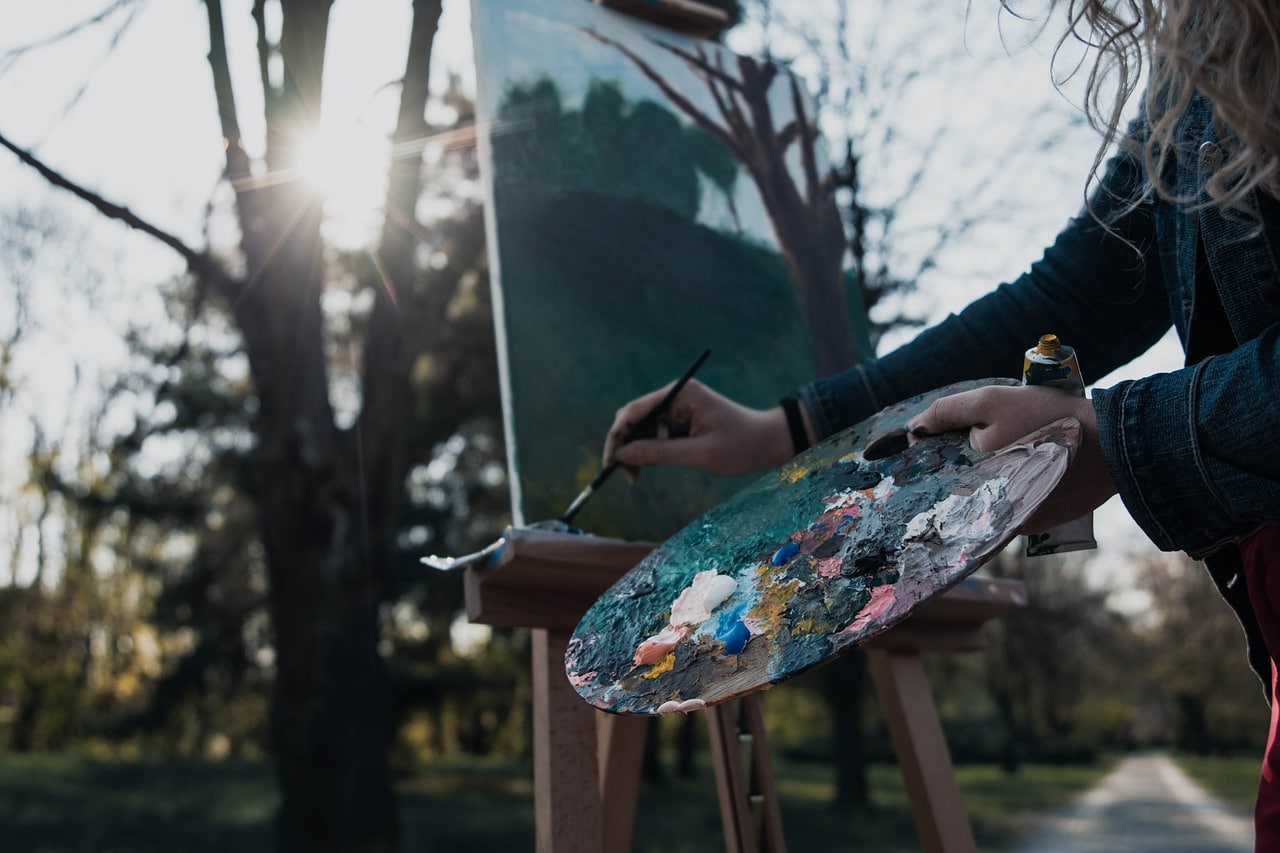
This image is property of pixabay.com.
Commissioned Work and Custom Orders
Advertising your commission services
Promoting your commission services is an effective way to generate additional income as an oil painter. Let potential clients know that you are open to creating custom pieces based on their specific requests and preferences.
Utilize your online presence, such as your website or social media platforms, to showcase examples of your commissioned work. Highlight your ability to bring clients' visions to life and create personalized pieces that reflect their unique tastes and personalities.
Collaborating with clients
Collaborating with clients is essential when working on commissioned pieces. Take the time to understand their expectations, preferences, and the intended purpose for the painting. Communicate regularly throughout the process, providing progress updates and seeking feedback.
Maintain a positive and professional attitude, and be open to incorporating clients' suggestions into the artwork while staying true to your artistic vision. Building strong relationships with clients through collaboration will not only lead to client satisfaction but also potential referrals and repeat business.
Providing exceptional customer service
Exceptional customer service is key to ensuring client satisfaction and generating positive word-of-mouth recommendations. Respond promptly to client inquiries or concerns, and provide a transparent process from initial contact to final delivery of the commissioned piece.
Keep clients informed about the progress of their paintings, and provide them with a clear timeline for completion. Ensure that your artwork is securely packaged for shipping and that it arrives in pristine condition. Going above and beyond in providing exceptional customer service will not only result in happy clients but also help build your reputation as a professional and reliable artist.
Teaching Oil Painting Classes
Establishing a teaching plan and curriculum
If you have a passion for sharing your knowledge and skills, teaching oil painting classes can be a rewarding way to generate income while inspiring others. Start by establishing a teaching plan and curriculum that outlines the topics and techniques you will cover in your classes.
Consider the skill levels of your prospective students and design classes that cater to beginners, intermediate, or advanced painters. Break down your curriculum into manageable lessons with clear objectives and include hands-on exercises and demonstrations to facilitate learning.
Finding suitable teaching locations
Finding suitable teaching locations is crucial for a successful oil painting class. Look for art schools, community centers, or studios that offer space for art instruction.
If you prefer to teach independently, consider setting up a dedicated space in your home or rent a studio where you can provide a comfortable and inspiring environment for your students. Ensure that the teaching location has good lighting, access to necessary art supplies, and the ability to accommodate the number of students you plan to teach.
Promoting your classes
Promotion is key to attracting students to your oil painting classes. Utilize both offline and online marketing strategies to reach potential students.
Create visually appealing flyers or brochures and distribute them at local art stores, community bulletin boards, and other relevant establishments. Leverage your online presence by promoting your classes on your website, social media platforms, and art-related forums or groups.
Consider offering an introductory class or a discounted rate for the first few lessons to encourage new students to try your classes. Positive testimonials and word-of-mouth recommendations from satisfied students can further boost your class enrollment.
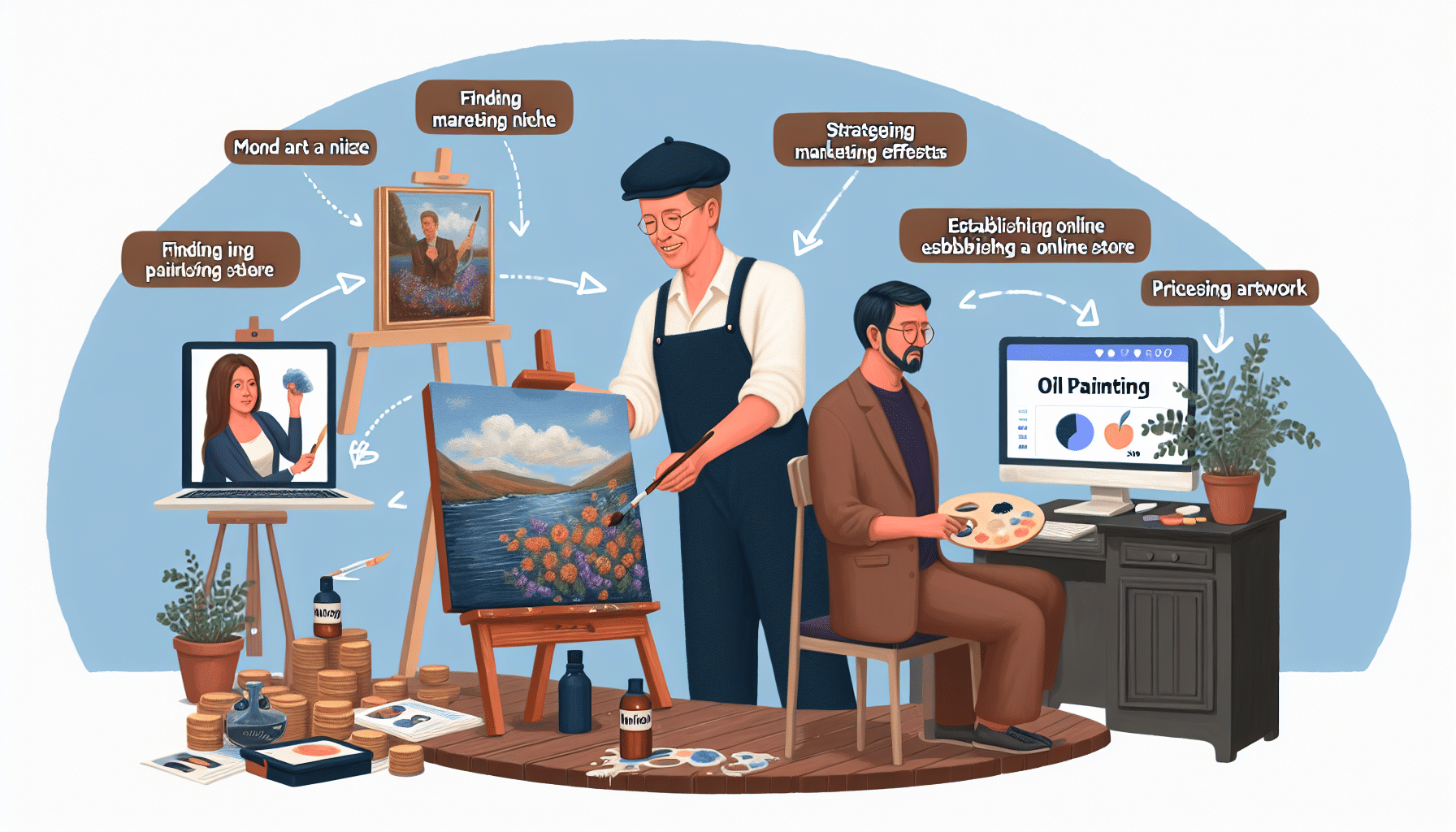
Entering Art Contests and Exhibitions
Researching and applying to relevant contests
Entering art contests is an excellent way to gain recognition and exposure as an oil painter. Research and choose contests that align with your artistic niche and goals.
Explore both local and national contests, as well as those specific to oil painting. Pay attention to submission deadlines, entry fees, and any specific requirements or themes for each contest. Follow the guidelines carefully and submit your best work to maximize your chances of success.
Preparing and submitting artworks
When preparing artworks for art contests or exhibitions, pay attention to presentation and packaging. Ensure that your paintings are clean and properly framed or stretched on canvas, depending on the specific requirements of each contest.
Take high-quality photographs of your artwork to accompany your submission, and provide detailed descriptions and artist statements if required. Double-check all submission materials and ensure they adhere to the guidelines provided by each contest.
Leveraging recognition and awards
Recognition and awards from art contests or exhibitions can significantly enhance your reputation as an artist. Leverage this recognition by updating your portfolio, website, and social media platforms to highlight your achievements.
Include information about the contests you've won or been selected for in your artist bio or CV. Share news of your success with your followers, and consider hosting a solo exhibition or participating in group shows to showcase your award-winning paintings.
Recognition and awards can establish you as a credible and talented artist in the eyes of potential buyers and lead to increased sales and opportunities in the art world.
Licensing and Merchandising
Exploring licensing opportunities
Licensing your artwork can be a lucrative way to generate passive income and expand your art business beyond original oil paintings. Explore licensing opportunities with companies that produce products such as prints, home decor, stationery, or apparel.
Research companies that align with your artistic style and niche, and reach out to them to inquire about licensing your artwork. Be prepared to negotiate terms, such as royalties and contract duration, that work in your favor.
Creating merchandise based on your artwork
Creating merchandise based on your artwork allows you to reach a wider audience and make your art more accessible to different demographics. Consider producing prints, posters, greeting cards, calendars, or even wearable items such as t-shirts or tote bags.
Work with reputable print-on-demand companies or local printers to ensure the quality and consistency of your merchandise. Focus on creating high-quality products that showcase your artwork in the best possible way.
Finding suitable distributors
Finding suitable distributors is essential for effectively marketing and selling your licensed merchandise. Identify retail stores, online marketplaces, or galleries that cater to your target audience and are interested in carrying your products.
Reach out to potential distributors, provide them with samples of your merchandise, and negotiate terms of collaboration. Ensure that your merchandise is properly displayed and promoted by the distributors to maximize sales potential.
By exploring licensing and merchandise opportunities, you can broaden your revenue streams and increase your art's visibility in the market.
